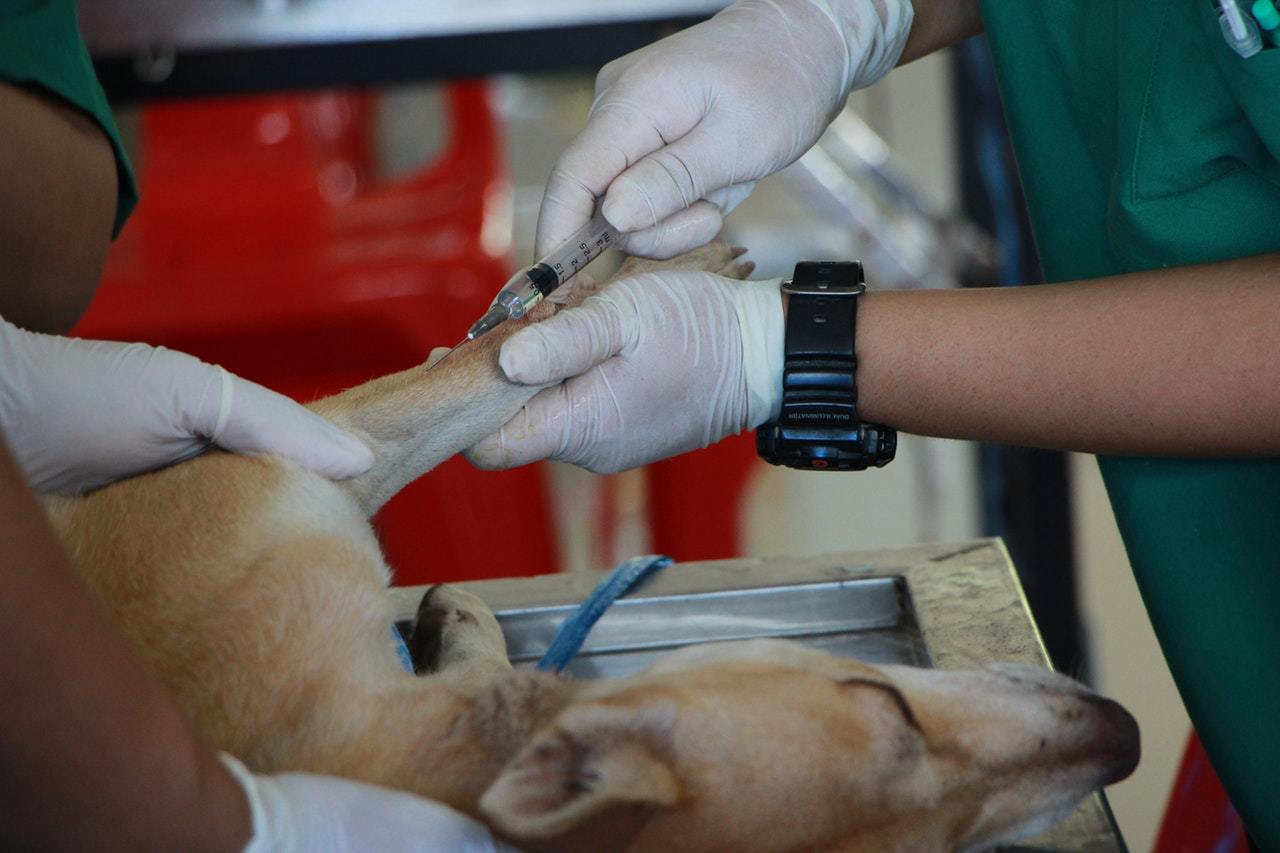How Much Does a Dog X-Ray Cost?
Dogs are like our fur children, and most pet parents would go to any lengths make their pup feel better. It can be especially difficult since dogs cannot voice exactly what's wrong with them.
It’s already hard to enough to deal with a sick pup, but it can be extremely difficult to see the vet bill afterward. While it’s worth having your dog feel it’s best, costs of treatment could send someone to the poorhouse.
It goes together that people are willing to pay more for the pets and that vets charging more for their visits. However, there are ways around paying thousands of dollars when your pup gets sick.
What's the Average Cost of Dog X-Rays?
Dog x-rays can range from $80 to $400. There are many different factors that can affect the price. For example, if your pup has to be sedated for the x-ray expect an extra fee as well.
Location of the x-ray will change the price as well. For example, German Shepherds are more likely to have hip issues. A hip x-ray can cost up to $150. Sometimes more than one x-ray is needed, and you will pay for visit and x-ray.
The location of where you get your dog’s x-ray also factors into its cost. As a rule of thumb, an x-ray that is conducted within an emergency animal clinic is going to cost you twice as much as the same procedure done at a local vet’s office. The cost of living in a city is also going to play a role in price, as more cost-effective cities tend to have lower x-ray rates.
X-ray cost is also somewhat determined by the size of the dog if sedation or anesthesia is involved. For a large dog, you can expect the price of sedation to fall from $50 to $200, whereas a small dog may set you back $40 to $180. You may want to touch base with your local vet get a better bead on this particular cost.
In general, though, it's not a very complicated procedure. Most dog x-rays can be done without putting your dog into a machine.
Personal Experience with Dog X-Rays
I’ve had dogs my entire life, so I can greatly empathize with the pet parent that says they spend a great deal in vet bills. The older your dog gets the more trips you have to make to the vet. It’s wise to have wellness checkups at least once a year.
However, the unexpected happens. One day you could find your nine-pound pup with a corn cob in his mouth. And that's dangerous!
So with an emergency fee of $200 already slapped onto my bill, I headed into the vet with my lethargic dog and all my emotional mess.
First they need blood work. Then they took the x-ray, not being able to see it well enough. Gave him some fluids so he could get his levels back to normal. Waited seemingly hours for the vet to come in the room for a second with news on my pup.
Took an ultrasound to see parts of the husk, then told to wait it out. And of course, come back in the morning for another x-ray to make sure all went well.
I almost had my own medical issue when I saw the bill of $1000+ and heard the $35 a month I was paying didn’t cover emergencies like this. I felt robbed, and worse of all, nothing definite was done for my baby.
Dog X-rays versus Human X-rays
When you separate the cost of an X-ray out of the equation, you still won’t necessarily excise all of the anxiety from the procedure. This is especially true if you are a novice dog owner and have never had to deal with the concept of canine X-rays before. After all, you love your little buddy, so it’s only natural if you are concerned about his well-being as his insides get photographed.

From a purely technological standpoint, X-rays for dogs and humans are the same. However, it should be noted that there are a few differences between the how the tech is applied. There is also some variance between how the results stemming from the tech are deciphered.
An X-ray machine has different settings; these settings dictate the number of beams that are shot from the device that will penetrate its target, thus creating the clearest picture possible.
Because dogs can be thicker than humans because of factors ranging from fur to tissue density, vets may have to use a higher setting to properly penetrate the dog to get an accurate reading. This adjustment will vary depending on what part of your pooch is getting examined.
The reason that X-rays read differently for dogs than for humans is not necessarily a by-product of the technology as it is a reflection of the vet’s training. Unlike a doctor, a vet is trained to be familiar with the complexities and issues of a wide range of animals beyond the canine realm. Therefore, vets may be a bit more deliberate in their approach to reading the X-rays.
Are There Other Types of Medical Imaging for My Dog?
While X-rays may be the first type of medical imaging that may come to your mind when the concept is initially brought up by your vet, it is not the only type that exists.
These other, highly-specified types are important because they allow the vet to hyper-focus on specific regions of the body in order to better pinpoint potential issues associated with the region. Not surprisingly, the other types of imaging are also types that we can undergo as humans.
- The first type is the ultrasound, and it is typically used to detect abdominal diseases, including certain ailments that an X-ray cannot detect. Much like the case with humans, ultrasound works by projecting a harmless, high-frequency sound beam into your dog’s body. Even though a dog has a more acute hearing range than we do, the ultrasound’s emissions cannot be detected by dog’s ears.
- Another type of medical imaging that can be done on your pooch is the CT scan, also known as a "cat scan." This form, which is technically known as computed tomography, essentially takes a rapid series of X-ray images and presents a "sliced" cross section of the focused body part. Typically, the CT scan method of medical imaging is especially useful when examining some of the more complex parts of a dog, like its chest, head, and certain joints.
- A third type of scan is an MRI. This method utilizes radio waves and a magnetic field instead of x-rays to generate images. Its ability to pick up on changes in body tissue can be instrumental in determining if your dog is suffering from brain or spinal cord conditions.
Emergencies vs Appointments & Where Pet X-Ray Costs Factor In
Some appointments can be made if your dog isn’t feeling well, but it isn’t an urgent matter. This will save the emergency fee on your bill and you can be guaranteed to work with their regular vet.

However, if your pup is having an emergency, forget the fee and take your doggie in. Some matters only take a couple of hours of to go from bad to worse. Taking extra caution and having extra time is crucial in an emergency.
Check with your vet to see their emergency fees. If your regular vet has office hours that do not work with your emergency, try an animal hospital. They will be open 24 hours and deal with emergencies more frequently.
What is the cost for these special imaging techniques?
The cost of medical imaging beyond X-rays tends to fluctuate based on the procedure is being used who is conducting the procedure. In the event of ultrasound, the price can range from $300 to $500.
One of the factors that dictate the price tag includes who does the procedure, as some vets may refer their canine patients to a specialty clinic to handle the procedure. The reason for the referral is that the equipment needed for the ultrasound can be expensive, and its usage may require additional training, which the vet may not have.
While the jump in cost from an x-ray to an ultrasound may not be too dramatic, this cannot necessarily be said about a CT scan or an MRI. These procedures can cost as much as $2,500, and this cost is not necessarily a one-time charge. If your pooch needs to come in for a second scan, you could be facing the same pricey charge all over again.
The primary reason for the cost of these devices is scarcity. The machines that produce the medical imaging are typically just found in advanced diagnostic centers, and they are usually only found in larger cities or veterinary schools. This is also why you cannot just make a specific appointment to use it - you must obtain a referral from your vet first.
Pet Insurance
related resources
It’s important to do plenty of research before your pup has an urgent issue. Paying some money towards an insurance plan that fits with your doggie can save you many migraines and paychecks.
Most insurances will range around $35-$50 a month depending on your detectable and what you want to be covered. A senior dog will more than likely need a plan that covers x-rays, blood works, and cancer treatments.
With a newer pup, a less detailed plan may be necessary. However, remember accidents happen to any dog at any time.
Talk with your vet about which plan seems best for you and your furry friend. Some insurance is set up through specific vet offices, while others are accepted in a wider range of places.
Peace of Mind
While paying any vet bill is no walk in the park for us humans, taking our pups to the vet is a way to ease our stressing minds. Knowing that your fur baby is in great hands, on the way to recovery is better than any price tag.






